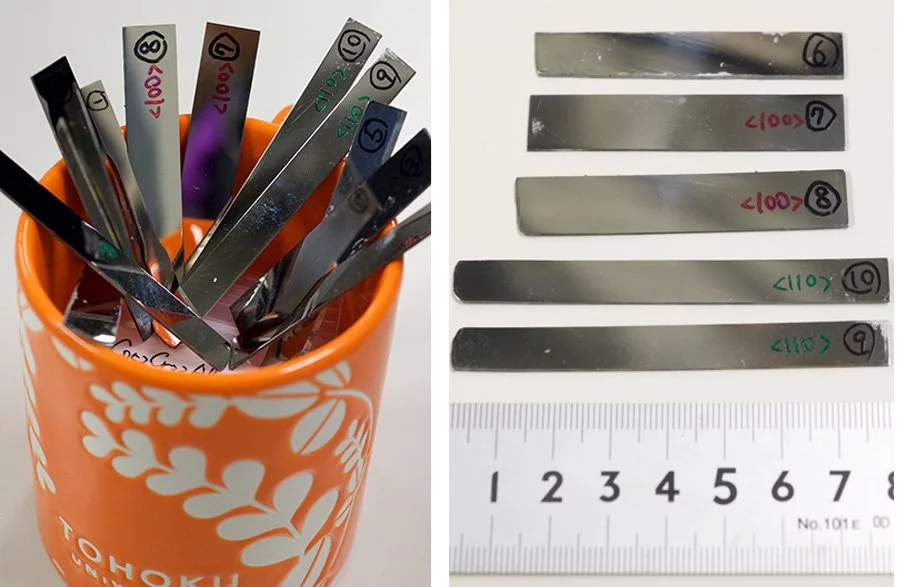Scientists experimenting with the makeup of metal alloys used for medical implants have made a significant breakthrough, resulting in a biomaterial with supreme flexibility and wear resistance. The team's new superelastic alloy overcomes some key safety issues and offers the kind of strain recovery and durability needed for long-term stints in the human body.
The new metal alloy is the handiwork of scientists at Japan's Tohoku University, who set out to address some of the key issues surrounding the biomaterials currently used for medical implants. These might be used as part of hip or knee joint replacements, though the metal materials in use today are stiffer than bone, which can lead to bone atrophy, or a loss of density. More flexible materials, meanwhile, tend to lose their wear resistance over time.
Existing supereleastic metal alloys used commonly in stents and orthodontic wires have shown promise as a way of walking this line between durability and flexibility, but they contain nickel which carries the risk of allergic reactions. Scientists have been unable to produce versions without nickel that offer this same superelasticity, so the authors of the new study went to work to find a solution.
This involved focusing on what's known as Young's modulus, which is a measure of how easily a material can stretch and be deformed, as determined by its crystalline structure. A flexible material has a low Young's modulus and a stiff material has a high Young's modulus. The team sought to reduce the Young's modulus gap between human bone and the metal used for medical implants.
"Since the Young's modulus hinges on crystal orientation, we grew single crystals with a specific crystal orientation," said Xiao Xu, corresponding author on the study.

These experiments led to the creation of a flexible and tough new superelastic alloy based on chromium that exhibited a strain recovery rate twice that of commercially available nickel-titanium alloys, at 17 percent. The Young's modulus, meanwhile, was extremely low, with the alloy offering flexibility akin to human bone.
"We knew that chromium possesses strong corrosive resistance, but the superelasticity, flexibility, and significant wear resistance of the cobalt-chromium-based material surprised us," said Xu.
The scientists are now working to better understand why their alloy, dubbed Co-Cr-Al-Si (CCAS), exhibits such excellent properties, with the hope of improving on them even further. In its current form, however, the scientists conclude that the novel biomaterial is a promising candidate for biomedical applications.
The research was published in the journal Advanced Materials.
Source: Tohoku University




